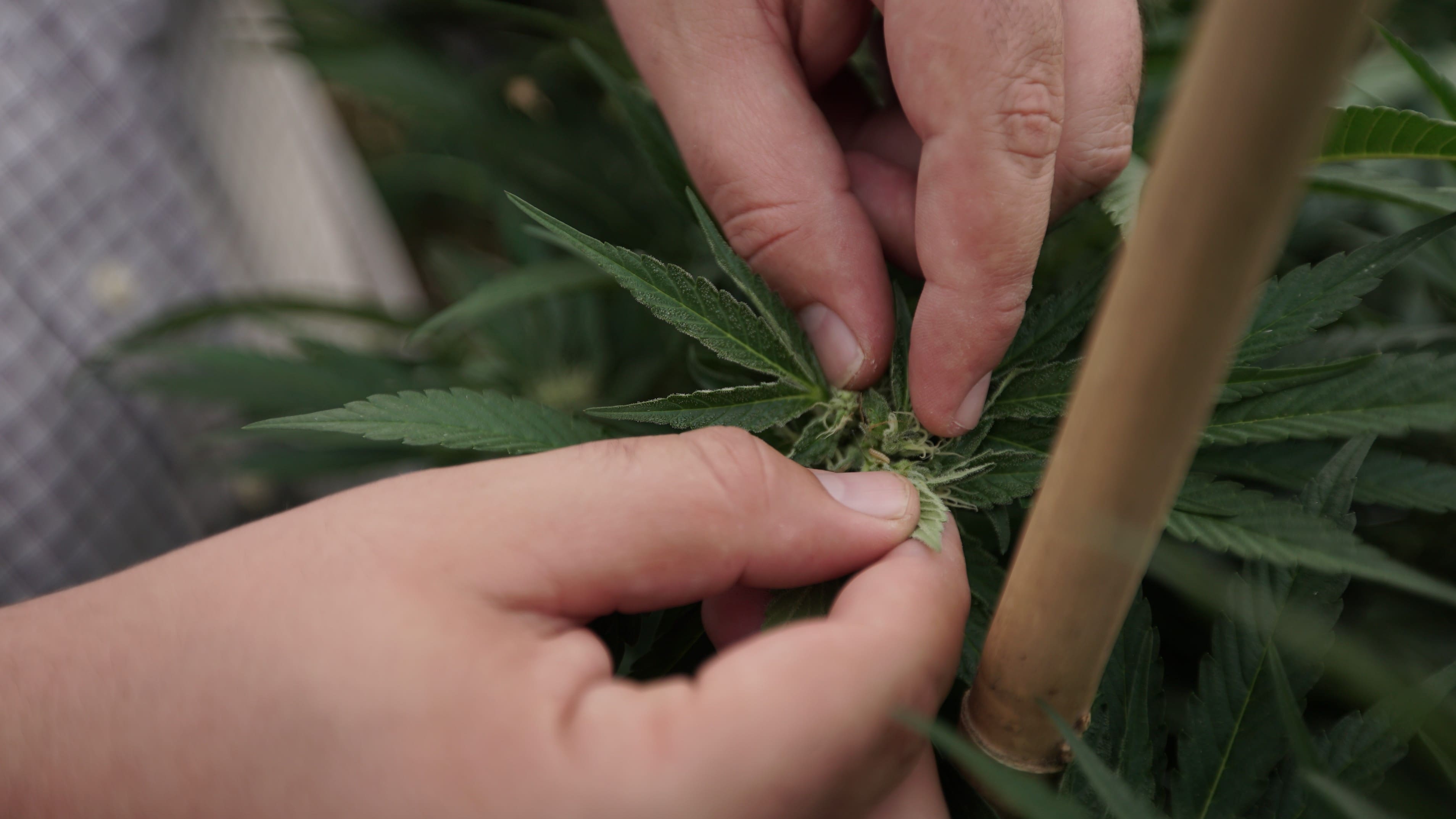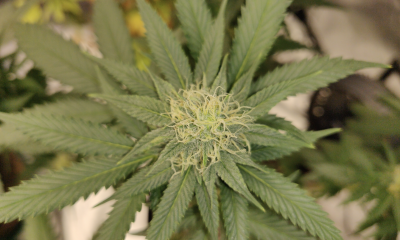Politics
Federal Standards Handbook Gets New Section On Cannabis Potency, Packaging And Labeling

A federal government handbook on standards for weights and measures is getting a new section on cannabis potency measurement, packaging, labeling and other issues related to products derived from the plant. The move is the result of a vote that state and local officials took at a conference last week.
At the annual meeting of the National Conference on Weights and Measures (NCWM), members considered a series of cannabis proposals, three of which had advanced to voting status at an earlier January conference. At last week’s meeting, two of the measures were narrowly rejected but one will now be incorporated into federal guidance from the National Institute of Standards and Technology (NIST).
NCWM’s Laws and Regulations Committee put forward all three of the measures, which then received votes by the bicameral conference’s House of Representatives and House of Delegates. In order to pass, each proposal needed at least 27 votes in both chambers, but two of them fell short by just two votes in the former body.
Those failed measures concerned establishing a uniform, federal definition for cannabis and cannabis-containing products and developing a policy for the water activity range for marijuana. But while they were not ultimately enacted at this meeting, a separate measure that was approved recommends that state officials overseeing commercial weighing and measuring apparatuses have the authority to establish individual cannabis standards for their respective jurisdictions.
Specifically, the approved measure advises that state regulators be empowered to start rulemaking to create standards for measuring potency of cannabis products, packaging and labeling requirements and “reasonable variations in levels of cannabinoid” content. It also includes authorities on setting allowable variations in marijuana or hemp quantity due to the loss or gain of moisture.
The section on giving officials that cannabis-related authority will be adopted into the NIST handbook, the next edition of which will be released in January 2023.
State departments overseeing weights and measures are not obligated to incorporate the cannabis standardization policies, as some states have already vested that responsibility in statute to other agencies.
“It’s not going to impact Florida. We gain our authority from our legislature,” Matthew Curran, food safety director of the Florida Department of Agriculture and Consumer Services, who participated in the conference, told Marijuana Moment in a phone interview on Friday.
“Florida is not an adult-use or so-called recreational state, so those powers and duties don’t affect Florida, and I really can’t speak to how they would affect other states,” he said.
But in any case, the incorporation of the language in the federal handbook is another sign of the normalization of the marijuana industry as it expands and matures in states across the country.
That said, the narrow defeat of the other two proposals at the conference shows that there’s more work to be done. While they received enough votes in the House of Delegates, which is comprised of numerous NCWM-affiliated regulators, the measures came up just shy of passage in the separate House of Representatives, which consists of 52 voting members representing all 50 states and two U.S. territories.
Not all members of that chamber attended the conference or participated in the vote on the cannabis proposals. The measures have now been returned to committee, which means they could be taken up again at next year’s January meeting. If members again decide to assign them voting status, it’s possible they could be enacted next July and adopted into NIST’s 2024 handbook.
Charlie Rutherford, co-chair of the NCWM cannabis task force, told Marijuana Moment in a phone interview on Wednesday that there was “a pattern” with respect to states that chose to abstain from voting on the failed cannabis standardization proposals.
Specifically, “the CBD-only states, or the states that don’t allow flower, were the primary ones to abstain,” he said.
“By my count, I have 37 possible voting states, and 27 of them did vote. And from what I’m looking at, that’s mainly where they fell,” Rutherford said, adding that “there were a couple of surprises in there.”
In other words, in the chamber where each state has one designated voting member, states that haven’t implemented comprehensive marijuana markets were more likely to avoid taking a position on creating the federal cannabis standards. But with more states set to vote on legalization at the ballot this November, and legislatures a diversity of states also expected to continue considering reform, it’s reasonable to expect that there may be a different outcome next year as more industries come online.
Rutherford said he agrees that as more states enact reform, the momentum for cannabis standardization within NCWM will follow suit.
“I think, too, when it’s a little less politically explosive, that that will happen as well,” he said. “We can be encouraged—and consumers and patients could be encouraged—that we could get it done next July.”
“Certainly if the federal landscape changes significantly,” he added, “that could very well have an impact on how particular states vote one way or the other.”
That could also apply to other cannabis-related proposals that have been introduced in NCWM committees, including one that was considered in January but didn’t receive voting status for this month’s meeting.
That measure from NCWM’s Specifications and Tolerances Committee called for the development of “scale suitability requirements” for the direct sale of bulk marijuana to dispensaries in legal states. It’s still being workshopped, however, and could come back up at the January 2023 meeting.
NIST has separately investigated marijuana issues and worked to develop testing standards through its Office of Weights and Measures, and it provided analyses of the NCWM proposals ahead of the January. But it does not play a voting role in whether the conference items are adopted.
On a related note, NIST announced in 2020 that it was launching a cannabis testing program to help ensure that the products people purchase from retailers and dispensaries are accurately labeled.
In 2021, the agency also invited labs to participate in a large-scale study to assess their ability to accurately analyze marijuana and hemp samples for their cannabinoid profile and possible contaminants.
Meanwhile, the National Institute on Drug Abuse (NIDA) recently posted a request for applications on creating a medical marijuana registry to track everything from how patients are obtaining and consuming cannabis to their health outcomes. It’s part of an overall objective to develop data standardization that could be used to “inform research, policy, and clinical recommendation practices on medicinal cannabis, associated conditions, and outcomes.”
NIDA separately announced last year that it had determined the standard dose of THC that should be used for marijuana studies moving forward.
At the state level in California, marijuana regulators are seeking input on proposed rules to standardize cannabis testing methods in the state—an effort that officials hope will stop marijuana businesses from “laboratory shopping” to find facilities that are more likely to show higher THC concentrations that they can then boast for their products.
Here’s draft language of the NCWM cannabis proposal that was adopted for the NIST handbook, though attendees say that the text was slightly revised so this is not the final version:
II. The Director may:
(a) Establish by regulation for Cannabis and Cannabis-Containing Products:
(1) reasonable variations in quantity caused by the unavoidable loss or gain of moisture during current good manufacturing and distribution practices and procedures for moisture determinations;
(2) labeling requirements for, and defining reasonable variations in water activity that occur in current good manufacturing and distribution practices, and procedures for the measurement of water activity;
(3) labeling requirements for, and defining reasonable variations in levels of cannabinoid that occur in current good manufacturing and distribution practices, and procedures for the measurement of potency; and
(4) packaging and labeling requirements that may include, among other requirements, the characteristics of the packaging (e.g., color) and type of packaging (e.g., tamper evident, childproof, product stabilization), requirements for identity, ingredients, product lot code and date of packaging, contact information of the packer, special symbols or warnings, and potency. The requirements may also include prohibitions on packaging that may be misleading or confusing.
(b) The Director may prescribe by regulation, programs that utilize accredited testing laboratories and may enter into agreements to utilize conformity assessment programs and other technical services to ensure compliance with any of the prescribed requirements.
Photo courtesy of Chris Wallis // Side Pocket Images.
















